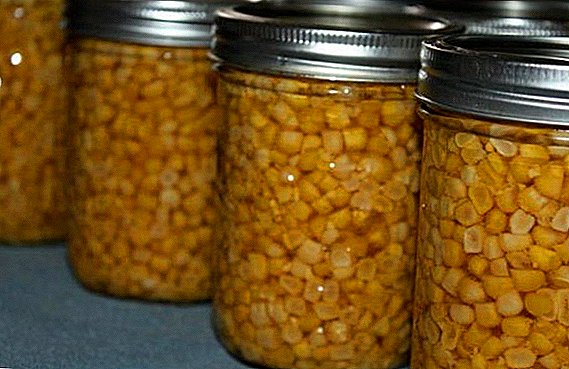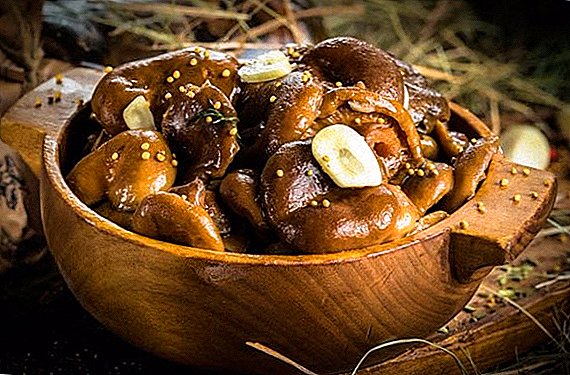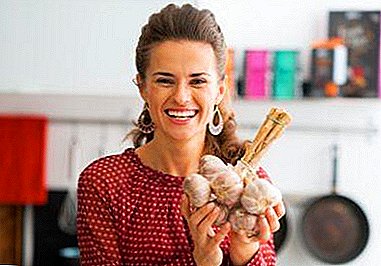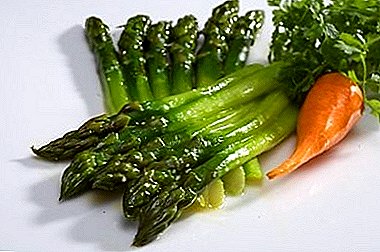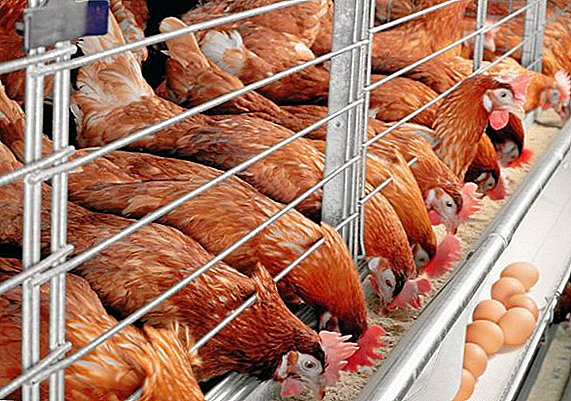 Combined feed is used on an ongoing basis, not only for the cultivation of meat crosses, but also egg, so there are many different types and variations of such mixtures. This allows you to create a complete menu for chickens in both large and small farms. Next, we will talk about the types and composition of feed, about consumption rates and main components, as well as the preparation for feeding.
Combined feed is used on an ongoing basis, not only for the cultivation of meat crosses, but also egg, so there are many different types and variations of such mixtures. This allows you to create a complete menu for chickens in both large and small farms. Next, we will talk about the types and composition of feed, about consumption rates and main components, as well as the preparation for feeding.
Useful properties of feed for chickens
Compound feeds are used everywhere for feeding chickens not only because they allow us not to think about the preparation of various products, but also because they are balanced, saturated with all the necessary vitamins and mineral elements. Complete feed for chickens are composed of proteins, fats and carbohydrates in the quantities in which they are necessary for the bird. This allows you to increase weight gain, as well as improve the quality of the products.  There is also a vitamin and mineral component, which allows you to keep the bird on this type of food year-round without any fear. In the cold season, such food is indispensable. The use of feed is that even in minimal doses, it is able to satisfy all the needs of chickens. The problem with the storage area is also solved, since you do not need to store root crops, grain, silage and various concentrated supplements, but it is enough to buy mixed fodder.
There is also a vitamin and mineral component, which allows you to keep the bird on this type of food year-round without any fear. In the cold season, such food is indispensable. The use of feed is that even in minimal doses, it is able to satisfy all the needs of chickens. The problem with the storage area is also solved, since you do not need to store root crops, grain, silage and various concentrated supplements, but it is enough to buy mixed fodder.
Did you know? In the 80s of the last century, one American company offered to use glasses for chickens with red lenses. Such a device was supposed to reduce aggressiveness, as well as to prevent cannibalism among birds, as the red light affects the chickens soothingly. Unfortunately, the hens, after applying the know-how, quickly lost their sight, which is why they had to give up their glasses.
Types of feed
On the agricultural market are different types of combined feed, which are delimited not only by the types of poultry, but also by age and direction. The following are the most popular options.
Learn how to prepare feed for chickens and for adult birds with your own hands.
PC-0
Quite a rare version of the feed, which is designed for broilers at the age of 1-14 days. The mixture is rich in vitamins, minerals, trace elements, beneficial bacteria. 
Composition:
- wheat;
- soybean meal;
- corn;
- sunflower meal;
- limestone flour;
- fish meal;
- vegetable oil;
- antioxidant;
- salt;
- enzymes;
- vitamin and mineral premix;
- betaine hydrochloride.
Important! Part of the starting feed includes the drug lasalocid sodium in prophylactic dosage (to avoid coccidiosis).
PC-1
This composition is used for feeding laying hens that are 1 year old. Complete feed, which is saturated with vitamins and various minerals, and also has a high nutritional value. 
Composition:
- wheat;
- corn;
- soybean cake;
- sunflower meal;
- limestone flour;
- salt;
- vitamin and mineral supplement.
PC-2
Used for feeding chicks at the age of 1-8 weeks. PC-2 is saturated with all the necessary minerals and vitamins, and medicines are also added in prophylactic dosage. 
Composition:
- wheat;
- corn;
- sunflower meal;
- fish meal;
- meat and bone meal;
- sunflower oil;
- a piece of chalk;
- salt;
- L-lysine monochlorohydrate;
- methionine;
- premix
PC-3
This variation is introduced into the diet immediately after PC-2, that is, from week 9. The food is made in the form of small grains, so the bird quickly eats it without any problems. Giving this feed to the bird can be up to 17 weeks of life inclusive. In addition to vitamins and minerals, probiotics have been added to the feed, as well as substances that improve the digestion of food. 
Composition:
- wheat;
- corn;
- soybean cake;
- sunflower meal;
- limestone flour;
- salt;
- vitamin and mineral supplement.
Unique compound feed PK-7
Used for feeding cocks and hens egg crosses at the age of 18-22 weeks. It is very difficult to find this variation, it is often produced only under the order, therefore it is not possible to set out the composition.
Make a chicken feed at home, and make the right diet.
The composition of feed for chickens
Mostly compound feed for birds consists of the following components:
- corn;
- wheat;
- barley;
- peas;
- meal;
- a piece of chalk;
- salt;
- shell rock.

Consumption rate of feed for chickens and layers
These standards should be known to every owner, because overfeeding birds leads to obesity, which negatively affects egg production and meat quality.
1-3 week of life
One chicken day requires from 10 to 26 g of feed. In just three weeks, each individual consumes up to 400 g.
4-8 week
The daily rate is 31-51 g, and in total for the specified period, each chicken eats about 1.3 kg of the combined feed. 
9-16 week
On the day of one individual, 51-71 g are required, and in total, up to 3.5 kg of feed is consumed during the period.
17-20 week
During the pre-selection period, consumption per day is 72-93 g, and in total for this period the chicken eats 2.2 kg.
We grow chickens, feed them properly, and treat non-communicable and infectious diseases.
21-27 week
The average daily rate is 100-110 g. For the entire period, each individual consumes 5.7 kg of feed.
28-45 week
The rate rises slightly and amounts to 110-120 g. In total, during the period the chicken eats 15 kg of the combined feed.
46-65 week
The rate is fixed at 120 g per day. Consumption per individual for the period - 17 kg.  Note that the indicated dosages correspond to feeds that are intended for individual periods of life (PC-2, PC-3). If you use homemade feed, then you need to set the norms by experiment.
Note that the indicated dosages correspond to feeds that are intended for individual periods of life (PC-2, PC-3). If you use homemade feed, then you need to set the norms by experiment.
How to make feed with their own hands
Consider making feed at home. We present the options for egg and meat crosses.
Recipe number 1
This option is suitable for adult chickens egg direction.
Composition and grams:
- corn - 0.5 kg;
- wheat - 150 g;
- barley - 100 g;
- sunflower meal - 100 g;
- fish meal or meat and bone meal - 150 g;
- yeast - 50 g;
- grass meal - 50 g;
- peas - 40 g;
- vitamin-mineral premix - 15 g;
- salt - 3 g
Video: how to do feed at home
Recipe number 2
An alternative, in which the lion's share falls on corn. Used for feeding adult laying hens.
Composition and grams:
- crushed corn - 0.5 kg;
- chopped barley - 0.1 kg;
- crushed wheat - 0.15 kg;
- meal - 0.1 kg;
- fish meal - 0.14 kg;
- grass meal - 50 g;
- peas - 40 g;
- feed yeast - 50 g;
- premix - 15 g;
- salt - 3 g
Recipe number 3
Finishing compound feed for broiler breeds of hens. Not used for feeding egg crosses.
Composition and grams:
- corn flour - 0.5 kg;
- cake - 0.17 kg;
- ground wheat - 0.12 kg;
- meat and bone meal - 0.12 kg;
- fodder yeast - 60 g;
- premix - 15 g;
- grass meal - 12 g;
- salt - 3 g
Video: feed their own hands
How to increase the palatability of feed
Feeding and digestibility of feed depend not only on the composition, but also on the physical form, as well as preliminary preparation, so it is important not only to mix the necessary ingredients, but also to apply them correctly. Mixed feeds have a small fraction, not because it is easier to pack them into bags of various sizes. The fraction corresponds to the age of the bird, as well as the characteristics of individual feeds.  For example, wheat does not grind to a state of flour, since upon contact with the mucous membrane it turns into a sticky lump, which is not only difficult to push through the esophagus, but also to digest. Each component of the compound feed has similar features; therefore, the digestibility of the same composition, but of a different fraction, may be different. There are also other ways to prepare the composition for feeding, which involve improving the taste, as well as increasing the availability of individual nutrients.
For example, wheat does not grind to a state of flour, since upon contact with the mucous membrane it turns into a sticky lump, which is not only difficult to push through the esophagus, but also to digest. Each component of the compound feed has similar features; therefore, the digestibility of the same composition, but of a different fraction, may be different. There are also other ways to prepare the composition for feeding, which involve improving the taste, as well as increasing the availability of individual nutrients.
Biological methods
Biological feed preparation is needed to improve the taste of food. At the same time, enzymatic splitting of carbohydrates, which are practically not digested in the body of chickens, is carried out to the elements that can be absorbed. Such training can significantly increase the digestibility of the feed, without changing its composition.
Yeast
The simplest is the straight-through method, which will be described below. Take 20 g of Baker's yeast, then dissolve them in a small amount of water. Then pour 1.5 liters of warm water (+ 40-50 ° C) into a bucket or large bowl and add diluted yeast. After that, pour 1 kg of the combined feed into the container, mix thoroughly.  Move the tank to a warm place for 7-9 hours, after which the product is ready to be fed to the chickens. Note that after yeast the food is not stored, so cook such volumes that the bird can eat at one time. In the process of yeast, the feed is saturated with B vitamins, and its nutritional value increases.
Move the tank to a warm place for 7-9 hours, after which the product is ready to be fed to the chickens. Note that after yeast the food is not stored, so cook such volumes that the bird can eat at one time. In the process of yeast, the feed is saturated with B vitamins, and its nutritional value increases.
Important! Replacing baker's yeast fodder can not.
Malting
It is used to improve the taste of food, because during this process a part of the starch is converted into sugar, as a result of which the mixture becomes sweetish. Only the grain component of the feed gets dry, and accordingly, there is no sense in laying a full-fledged feed with premix and meat and bone meal, otherwise most of the vitamins and minerals will evaporate due to the high temperature.
Learn what feed is.
Grain debris is poured into the tank, and then boiling water is poured in (+ 90-95 ° C). For every kilogram of grain mixture take 1.5-2 liters of water. After steaming the tank should be closed and sent to a warm place for 3-4 hours. The temperature inside the tank should not fall below +55 ° C, otherwise the process of anti-aging will stop. To speed up the process, you can add 1-2 g of malt per kilogram of the mixture.
Silage
In fact, this process can be compared with sour cabbage. The mowed grass is laid in the silage pit, after which lactic acid bacteria are taken to work, which create an acidic environment, preserving greens. The following herbs are put on the silo: alfalfa, green oats, clover, soybean, aerial parts of peas. Root vegetables may also be added: potatoes and carrots.  1 kg of high-quality silage contains 10-30 g of easily digestible protein, as well as about 5% carotene. There is also a large proportion of vitamin C and organic acids. Such a product is not only nutritious, but also useful. It improves the functioning of the digestive system, and also prevents the development of putrefactive processes.
1 kg of high-quality silage contains 10-30 g of easily digestible protein, as well as about 5% carotene. There is also a large proportion of vitamin C and organic acids. Such a product is not only nutritious, but also useful. It improves the functioning of the digestive system, and also prevents the development of putrefactive processes.
Physical and mechanical methods
Mechanical methods of preparation do not affect the availability of substances in the feed, however, they significantly simplify and speed up the digestion process, as a result of which the poultry organism spends less energy on the processing of feed. Thus, the nutritional value increases without any changes at the chemical level.
Shredding
Grains of cereal plants are covered with a protective sheath, which does not allow quick access to nutrients. If the grain is fed as a whole, then the chicken's gastrointestinal tract spends a large amount of energy on the destruction of the shell. It is for this reason that all grains undergo a grinding process, which significantly improves and accelerates the absorption of nutrients.  The degree of grinding depends on the specific type of grain, as well as on the age of the bird. The harder the food, the smaller the fraction must be in order for the splitting to take place quickly enough.
The degree of grinding depends on the specific type of grain, as well as on the age of the bird. The harder the food, the smaller the fraction must be in order for the splitting to take place quickly enough.
Granulation
It allows you to get not only convenient, small in size fractions that do not stain the container or the feeder, but also a full set of all the nutrients that simultaneously enter the body of the bird. In the case of bulk feed, chickens have the opportunity to choose what they like best, so any granular feed is a priori more beneficial than a bulk feed.  Since the feed undergoes heat treatment during granulation, it becomes more accessible to the digestive tract. At the same time, some of the beneficial vitamins and trace elements are lost.
Since the feed undergoes heat treatment during granulation, it becomes more accessible to the digestive tract. At the same time, some of the beneficial vitamins and trace elements are lost.
Mixing
The simplest operation, which still does not affect the digestibility of the feed. The fact is that the chicken must consume all the components of the feed at once, so they must be thoroughly mixed, and also have a similar fraction. If the composition is poorly mixed, some individuals will receive a double dose of premix, while others will not receive at all, which will affect the weight gain and egg production.  During the mixing process, water or serum can be added to “stick” the fine fraction to large particles. This allows you to increase the efficiency of feed that gets into the body of chickens, and will not remain on the feeder.
During the mixing process, water or serum can be added to “stick” the fine fraction to large particles. This allows you to increase the efficiency of feed that gets into the body of chickens, and will not remain on the feeder.
Did you know? There is a breed of chickens called "Araucana", which carries blue eggs. This feature is associated with the retrovirus, which is embedded in the DNA and stains the shell in an unusual color. At the same time, eggs do not differ in taste from products of other breeds.The task of the farmer is not only to buy feed, which corresponds to the age of the bird, but also to properly prepare it for feeding, if required. The methods described above allow you to increase the already considerable caloric content of feed, reducing the cost of procurement.


